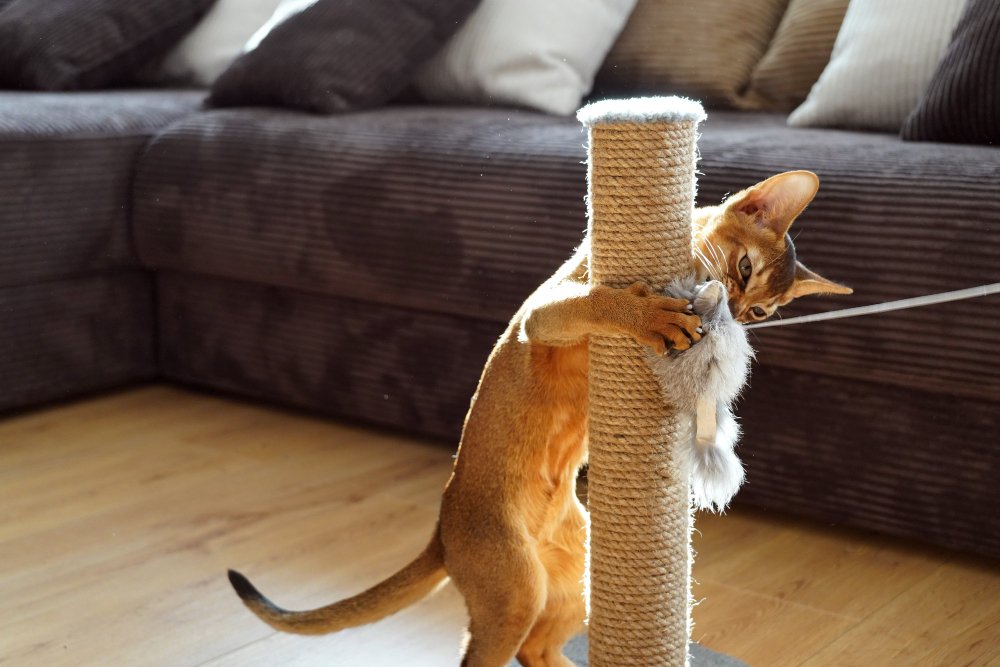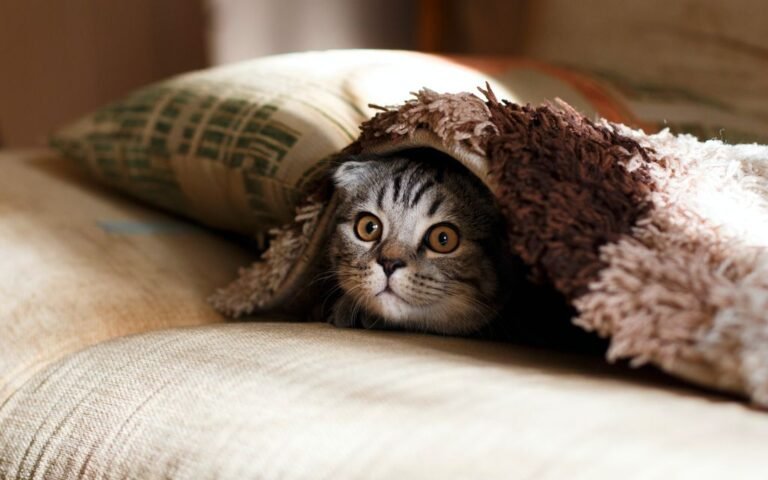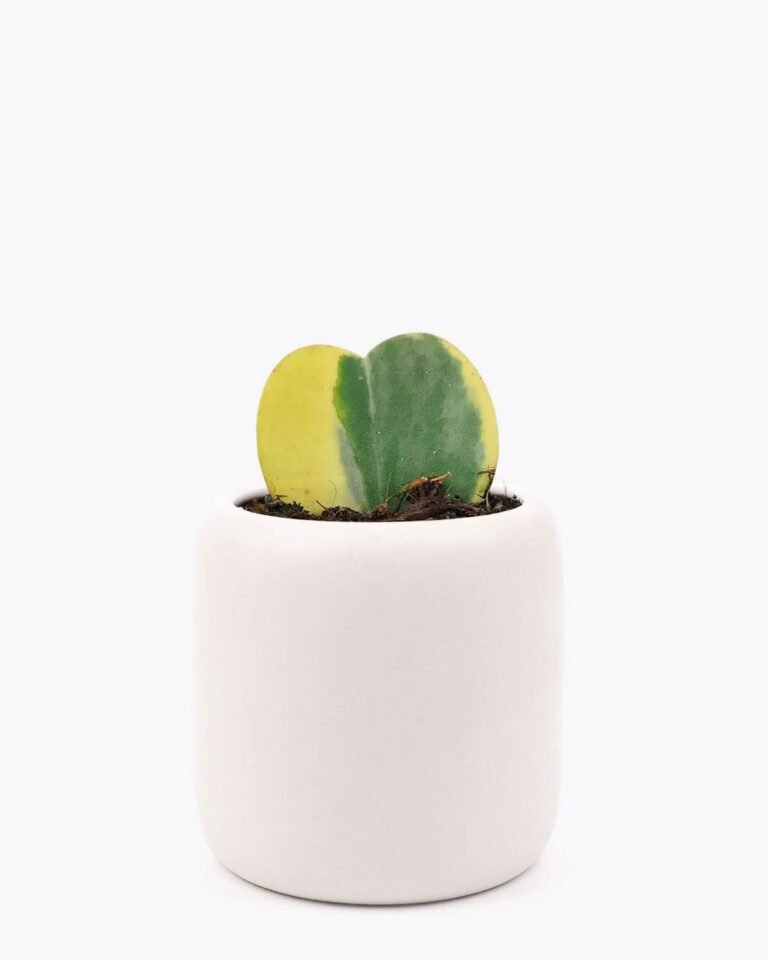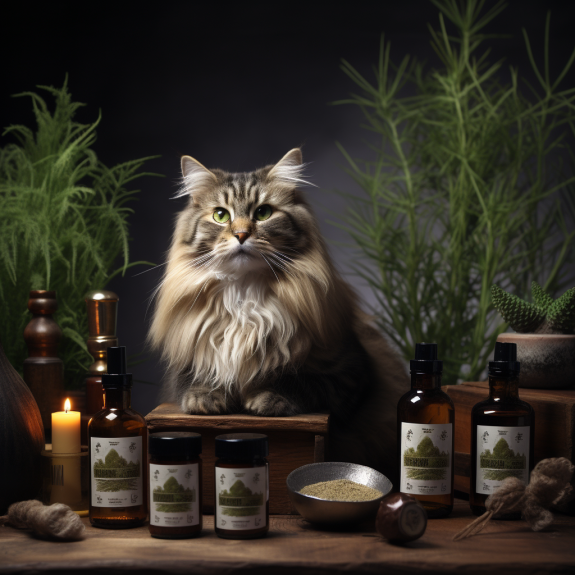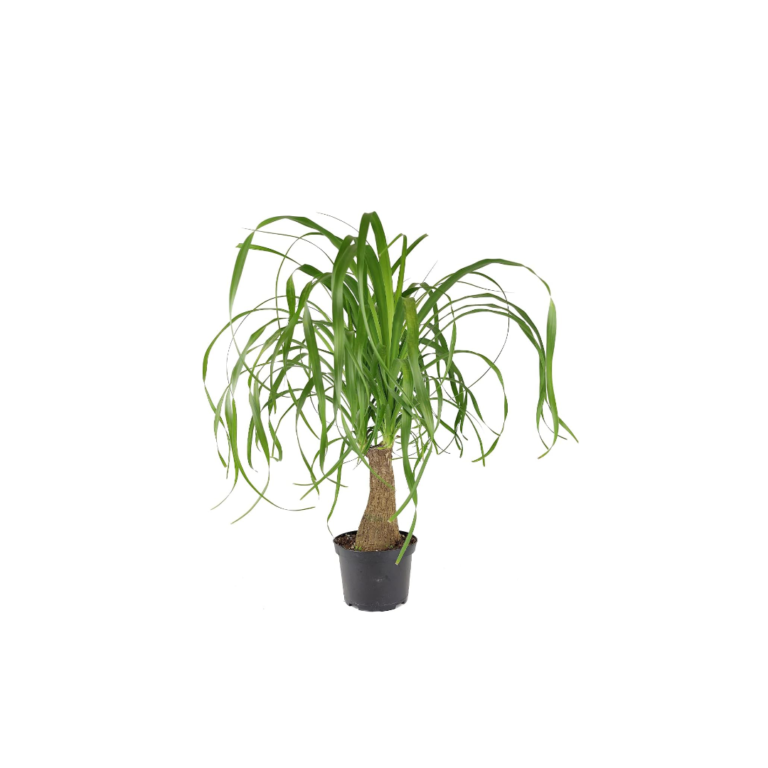DIY Cat Trees and Scratching Posts: Fun Projects for Your Feline Friends
DIY cat trees and scratching posts are not only fun projects to make, but they also provide numerous benefits for your feline friends. By building your own cat tree, you can customize it to suit your cat’s preferences and create a safe and stimulating environment for them. Additionally, making a scratching post allows your cat to engage in their natural scratching behavior while protecting your furniture. In this article, we will explore the benefits of DIY cat trees and scratching posts, choosing the right materials, designing and building your own, tips for making the scratching post irresistible to your cat, and maintaining and repairing your DIY creations.
Key Takeaways
- DIY cat trees and scratching posts provide a safe and stimulating environment for your feline friends.
- Building your own cat tree allows you to customize it to suit your cat’s preferences.
- Scratching posts help protect your furniture by providing a designated scratching area for your cat.
- Choosing safe and durable materials is important for the construction of your DIY cat tree.
- Placing the scratching post in the right location and choosing the right texture can make it more appealing to your cat.
Why DIY Cat Trees and Scratching Posts are Great for Your Feline Friends

Benefits of DIY Cat Trees
Building your own cat tree has several benefits for both you and your feline friend. First, it allows you to customize the tree to suit your cat’s specific needs and preferences. You can choose the height, size, and design that will provide the most comfort and entertainment for your cat. Second, DIY cat trees are often more affordable than store-bought ones, saving you money while still providing a high-quality product. Finally, building a cat tree can be a fun and rewarding DIY project that allows you to bond with your cat and showcase your creativity.
Benefits of DIY Scratching Posts
Scratching posts are essential for cats as they provide a designated area for them to scratch and stretch their muscles. By providing a scratching post, you can protect your furniture from being damaged by your cat’s natural instinct to scratch. Hemp for pets is a popular option for calming anxious cats and reducing destructive behavior. Additionally, scratching posts help to keep your cat’s nails healthy and prevent them from becoming too long or sharp. Regular use of a scratching post can also help to alleviate stress and boredom in cats, leading to a happier and healthier feline friend.
Choosing the Right Materials for Your DIY Cat Tree
Safe and Durable Materials
When choosing materials for your DIY cat tree, it’s important to prioritize your cat’s health and safety. Keep tabs on the materials you use and make sure they are safe for your cat to play with. Avoid using any toxic chemicals or plants that could harm them. Additionally, provide your cat with a comfortable sleeping area that is away from potential hazards, such as open windows or doors. By taking these precautions, you can create a beautiful and safe environment for your beloved feline friend.
Eco-Friendly Options
When choosing materials for your DIY cat tree, consider eco-friendly options that are safe for both your cat and the environment. Using sustainable materials such as recycled wood or bamboo can help reduce your carbon footprint and promote a greener lifestyle. Additionally, opting for non-toxic paints and adhesives ensures that your furry friends won’t be exposed to harmful chemicals. By incorporating eco-friendly materials into your DIY cat tree, you can create a safe and sustainable space for your cat to play and relax.
Designing and Building Your DIY Cat Tree
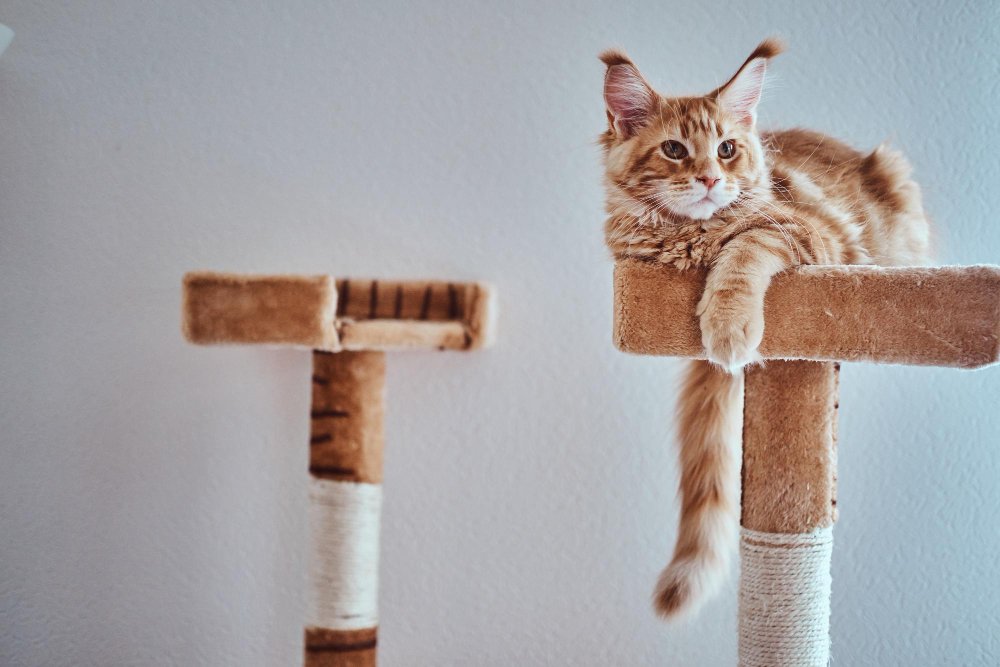
Creating a Sturdy Base
When designing and building your DIY cat tree, it is crucial to start with a sturdy base. This will provide stability and ensure that your cat can safely explore and play on the tree. Choosing the right materials for the base is essential. Opt for strong and durable materials such as plywood or solid wood. Avoid using materials that may easily break or warp over time. Additionally, consider adding reinforcements such as brackets or screws to further strengthen the base.
To create a stable foundation, make sure to secure the base to the floor or wall. This will prevent the tree from tipping over when your cat jumps or climbs on it. Use anchors or brackets to attach the base securely. It’s also a good idea to place the tree in a corner or against a wall for added stability.
Remember, a sturdy base is the key to a safe and long-lasting DIY cat tree that your feline friend will enjoy for years to come.
Adding Platforms and Perches
After creating a sturdy base for your DIY cat tree, the next step is to add platforms and perches. Platforms provide your cat with elevated spaces to rest and observe their surroundings. They can be placed at different heights to create a multi-level tree that mimics a natural environment. Perches, on the other hand, are smaller resting spots that can be attached to the tree trunk or branches. These perches give your cat a cozy spot to curl up and nap. It’s important to ensure that the platforms and perches are securely attached to the tree to prevent any accidents. You can use screws or brackets to secure them in place.
Incorporating Hideouts and Cubbies
When designing your DIY cat tree, don’t forget to include hideouts and cubbies for your feline friend to retreat to. Cats love having their own cozy spaces where they can relax and feel safe. These hideouts can be as simple as a covered platform or as elaborate as a small enclosed room. Consider using soft materials like carpet or fleece to line the inside of the hideout for added comfort. Creating hideouts and cubbies provides a sense of security and privacy for your cat, allowing them to observe their surroundings from a safe space.
To make the hideouts even more enticing, you can add some hands-free solution features. For example, you can attach a hanging toy inside the hideout or install a motion-activated light that turns on when your cat enters. These interactive elements will keep your cat entertained and engaged while they enjoy their private space.
In addition to hideouts, incorporating cubbies into your DIY cat tree can provide extra storage space for your cat’s toys or supplies. You can create cubbies by adding small compartments or shelves to the tree structure. This allows you to keep everything organized and easily accessible. Having designated storage areas ensures that your cat’s belongings are always within reach, making playtime and care more convenient for both you and your furry friend.
Remember, when designing and building your DIY cat tree, consider the size and preferences of your cat. Some cats may prefer larger hideouts or multiple cubbies, while others may prefer smaller, more enclosed spaces. Observe your cat’s behavior and adjust the design accordingly to create a tree that they will truly enjoy.
Tips for Making Your DIY Scratching Post Irresistible to Your Cat

Choosing the Right Texture
When it comes to choosing the right texture for your DIY scratching post, there are a few factors to consider. Durability is key, as you want a material that can withstand your cat’s claws without easily fraying or tearing. Sisal rope is a popular choice for its rough texture that provides a satisfying scratching experience for cats. Another option is corrugated cardboard, which is not only durable but also environmentally friendly. It’s important to avoid materials that are too smooth or slippery, as they may not provide enough resistance for your cat’s scratching needs.
To help you make an informed decision, here is a table comparing the different textures:
| Texture | Durability | Eco-Friendly |
|---|---|---|
| Sisal Rope | High | Yes |
| Corrugated Cardboard | High | Yes |
| Smooth Fabric | Low | No |
Remember, the texture you choose should be appealing to your cat and encourage them to use the scratching post. If your cat has a preference for a specific texture, it’s worth considering when selecting the materials for your DIY project.
Tip: To make the scratching post even more enticing, you can sprinkle some catnip on it or attach a toy to the top. This will help attract your cat’s attention and keep them engaged with the post.
Placing the Scratching Post in the Right Location
When it comes to placing the scratching post in the right location, there are a few key considerations to keep in mind. First, choose a prominent location in your home where your cat spends a lot of time. This could be near a window or in a room that your cat frequents. By placing the scratching post in an area that your cat naturally gravitates towards, you increase the likelihood that they will use it.
Next, consider the height and accessibility of the scratching post. Younger cats may prefer a taller post or climbing structure, while older cats may prefer something shorter and easier to climb. Take into account your cat’s age and physical abilities when selecting the height of the scratching post.
Additionally, think about the surrounding environment. Make sure there is enough space around the scratching post for your cat to comfortably scratch and stretch. Avoid placing the post too close to furniture or walls, as this may discourage your cat from using it.
Remember, the goal is to create a comfortable and stimulating environment for your feline friend. By strategically placing the scratching post in the right location, you can encourage your cat to engage in their natural scratching behavior and protect your furniture at the same time.
Maintaining and Repairing Your DIY Cat Tree and Scratching Post
Cleaning and Disinfecting
After your cat has been enjoying their DIY cat tree and scratching post, it’s important to keep them clean and free from bacteria. Regular cleaning and disinfecting not only helps maintain the longevity of the materials but also ensures a healthy environment for your feline friend. Here are some tips to help you clean and disinfect your DIY cat tree and scratching post:
- Regularly vacuum the cat tree and scratching post to remove any loose fur, dirt, or debris. This will prevent buildup and make the cleaning process easier.
- Use a mild detergent and warm water solution to wipe down the surfaces of the cat tree and scratching post. Avoid using harsh chemicals or cleaners that may be toxic to cats.
- For a deeper clean, you can disassemble the cat tree and scratching post and wash the individual components. Follow the manufacturer’s instructions for disassembly and reassembly.
- Rinse the components thoroughly with clean water to remove any soap residue.
- Allow the components to air dry completely before reassembling the cat tree and scratching post.
Remember, regular cleaning and disinfecting will help keep your DIY cat tree and scratching post in great condition and provide a safe and hygienic space for your cat to play and scratch.
Replacing Worn-out Materials
When it comes to maintaining and repairing your DIY cat tree and scratching post, it’s important to keep an eye out for worn-out materials. Over time, your cat’s scratching habits can take a toll on the tree or post, causing wear and tear. Regular inspection is key to identifying any areas that may need attention. If you notice frayed ropes, loose platforms, or damaged hideouts, it’s time to replace them to ensure your cat’s safety and enjoyment.
To make the replacement process easier, consider keeping a supply of spare materials on hand. This way, you can quickly swap out worn-out components without having to wait for new materials to arrive. It’s also a good idea to document the dimensions and specifications of each part of your cat tree or scratching post, so you can easily find the right replacements when needed.
In addition to replacing worn-out materials, it’s important to clean and disinfect your cat tree and scratching post regularly. Use pet-friendly cleaning solutions and follow the manufacturer’s instructions for best results. By maintaining your DIY cat tree and scratching post, you can ensure that your feline friend has a safe and enjoyable space to play and scratch for years to come.
Maintaining and repairing your DIY cat tree and scratching post is essential to ensure the safety and longevity of these beloved pet accessories. Regular inspections and maintenance can help identify any loose or damaged parts that may pose a risk to your cat’s well-being. If you notice any wobbling or instability, tighten the screws or replace any worn-out components. Additionally, regularly check the scratching posts for signs of wear and tear, such as frayed sisal rope or worn-out carpeting. By promptly addressing any issues and making necessary repairs, you can provide a safe and enjoyable environment for your feline friend. For holistic and natural care products for your pets, visit Whisker Wellbeing. Our wide range of options, including CBD, hemp, and other natural remedies, are designed to enhance the physical and emotional quality of life for your furry companions. Take a step towards improving your pet’s well-being and explore our website today!
Conclusion
In conclusion, DIY cat trees and scratching posts are fun projects that can provide your feline friends with a dedicated space for scratching and climbing. By creating these homemade structures, you can save money and customize them to suit your cat’s preferences. Remember to choose materials that are sturdy and have good scratching surfaces, and place the trees and posts in prominent locations in your home. By encouraging your cat to use these designated areas, you can protect your furniture and promote your cat’s physical and mental well-being. So why not embark on a DIY project and create a special space for your beloved feline companion today?
Frequently Asked Questions
What are the benefits of DIY cat trees?
DIY cat trees provide a fun and engaging environment for your feline friends. They offer opportunities for climbing, scratching, and exploring, which helps keep cats physically and mentally stimulated.
Why should I choose safe and durable materials for my DIY cat tree?
Using safe and durable materials ensures that your DIY cat tree is sturdy and can withstand the weight and activity of your cat. It also helps prevent any accidents or injuries.
Are there eco-friendly options for DIY cat trees?
Yes, you can use sustainable and environmentally friendly materials such as recycled wood or natural fibers for your DIY cat tree. This helps reduce your carbon footprint and promotes a greener lifestyle.
How do I create a sturdy base for my DIY cat tree?
To create a sturdy base for your DIY cat tree, use a solid and stable platform or foundation. You can reinforce it with additional support, such as brackets or screws, to ensure stability.
What are some tips for making my DIY scratching post irresistible to my cat?
Choose a scratching post with the right texture that your cat enjoys, such as sisal rope or cardboard. Place the scratching post in a location where your cat spends a lot of time and encourage them to use it by using catnip or treats.
How do I clean and maintain my DIY cat tree and scratching post?
Regularly clean and disinfect your DIY cat tree and scratching post to keep them hygienic. Use pet-friendly cleaning products and avoid harsh chemicals. Replace any worn-out materials to ensure the safety and longevity of the cat tree.

